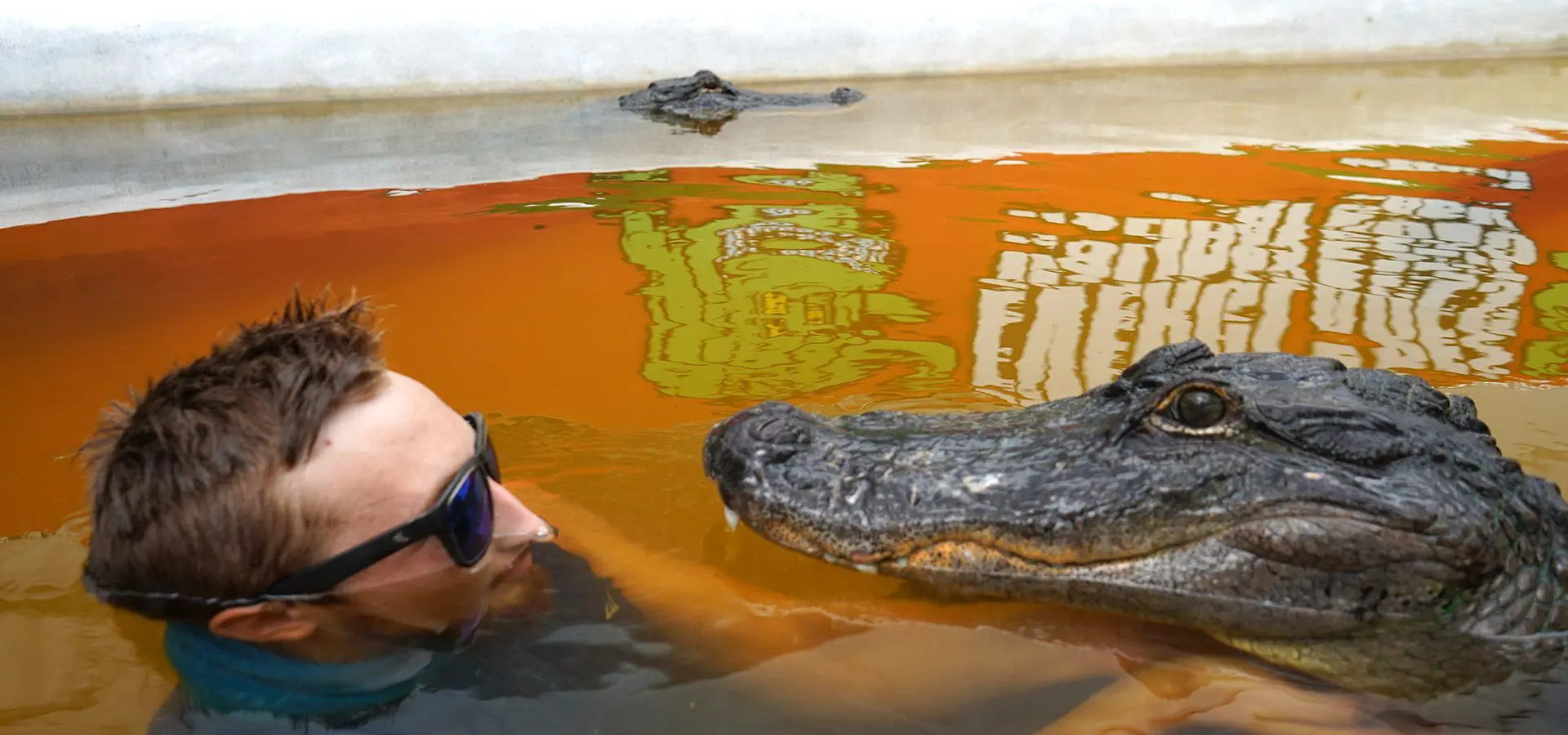
ANIMAL ENCOUNTERS EXPERIENCE
Go Wild with our Live Wildlife Encounters in Florida!
Buy Tickets Now

Animal Encounters

60-Minute* Airboat Tours

Private Airboat Tours

GENERAL ADMISSION
An Experience unlike any other!
ADULTS AND CHILDREN
$45** plus tax and applicable FareHarbor booking process fee.
NOTE: After your online purchase, when you arrive at the park, you must present the credit card that matches the last 4 digits of the card that was used in the online ticket purchase transaction(s) and matching driver’s license.

HOURS OF OPERATION
Enjoy our exotic Wildlife Encounters every day, on the hour, every hour from 10:00 AM – 4:00 PM
Please call 954-434-8113 for scheduling suggestions: same-day scheduling is welcome with limited availability.

PACKAGE UPGRADES
We have photo accessory and photo package upgrades upon request.
EXPERIENCE OUR WILDLIFE AND BABY ALLIGATORS
Our exclusive experience is available for individuals and groups of all sizes as a standalone experience, or as an add-on to your airboat tour ticket purchase.
Our animal encounter area is in a closed-off, private section of our park where guests will enjoy a relaxed setting with a small group. This way, you can guarantee front row, personal contact with our wildlife and our handlers, who will gladly answer any questions you might have about the animals you see on an private airboat tour. Your encounter will include a variation of tortoises, snakes, scorpions, goats, baby alligators, and more. Our expert handlers will teach you important and interesting information about these creatures, then give you the opportunity to interact with them.
Whether you’ve spotted exotic animals in the Everglades while speeding across the unique landscape in one of our state-of-the-art airboats or you have witnessed the jaw-dropping, breath-taking alligator wrestling show in our famous Gator Pit, you’re probably on-board to learn more about several other amazing creatures!
Our Everglades adventure park is thrilled to offer our visitors one of the most unique experiences found in the Everglades and our newest addition—Wildlife experiences in Florida. Enjoy an up-close and personal experience with everyone’s favorite exotic creatures. Our exclusive encounters are available for individuals and groups of all sizes as a standalone experience, or as an add-on to your airboat tour ticket purchase.
THE PERFECT WILDLIFE SHOW FOR EVERYONE
Looking for another adventure just as thrilling as our *60-minute long Everglades tour? Our Animal Encounter experience is safe for children of all ages—though all minors must be accompanied by an adult.
Enjoy a 45-minute up close and personal experience with up to 5 unique uncaged animals
Savor your experience forever with professional photos of your adventure, which are included – additional photo packages are available for an additional expense, upon request
Interact with a variety of unique and exciting animals like: baby alligators, snakes, foxes, bearded dragons, and tortoises to name a few
Learn fun facts and listen to stories from our expert wildlife handlers

LOOKING TO BOOK A GROUP ACTIVITY?
WE CAN HELP!
This is the ultimate group experience! Perfect for folks of all ages, and groups of all sizes. Our professional wildlife experts will walk you through up close and personal interactions with up to 5 different animals.

ENJOY AN AIRBOAT TOUR WITH YOUR ANIMAL ENCOUNTER
See the exotic wildlife up close and personal or from a distance—tack on a thrilling airboat tour as part of your Everglades experience.
ANIMAL ENCOUNTERS
GALLERY







EVERGLADES GATOR SHOWS
A THRILLING PRESENTATION FOR ALL TO ENJOY
Enjoy the show-stopping, heart-pumping, breath-taking gator show in our world-famous Gator Pit. These family-friendly shows are a must for everyone in your party. Watch as The Gator Boys Alligator Rescue team performs tricks and outrageous stunts with our rescued alligators. When the show is over, take your turn getting wild and enjoy a once-in-a-lifetime photo opportunity while holding a baby alligator!
Frequently Asked Questions
About Animal Encounters
READY FOR YOUR EVERGLADES ADVENTURE?
Animal Encounters & Everglades VIP Tour Pick-up service:
Open 9:00 AM - 4:00 PM daily. Park hours are subject to unpredictable weather.
Park Info:
Open 9:00 AM - 4:00 PM daily. Park hours are subject to unpredictable weather.
BAIT & TACKLE AND GENERAL STORE HOURS:
7 Days a week: 7:00 AM – 7:00 PM Eastern Time
AIRBOAT TOURS & GATOR SHOW HOURS:
7 Days a Week: We open at 9:00 AM Eastern Time (rain or shine). *Tours are approximately 60-minutes long. Our last airboat tour departs promptly at 4:00 PM Eastern Time SHARP! Please arrive no later than 3:30 PM to receive the full tour experience.
PARK PRICING:
**All prices are subject to change without notice at our discretion. Please call our office directly for the most up-to-date pricing information.







